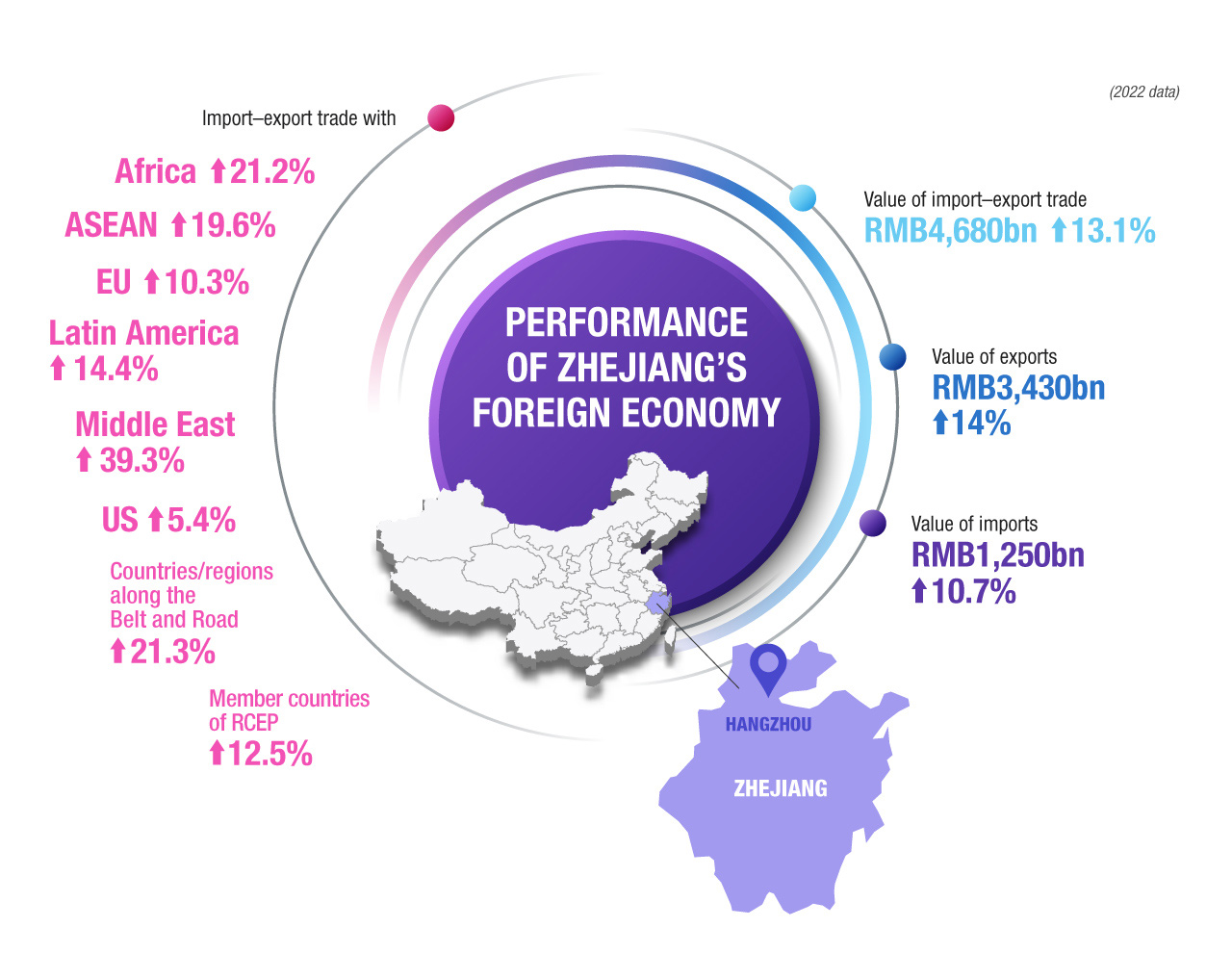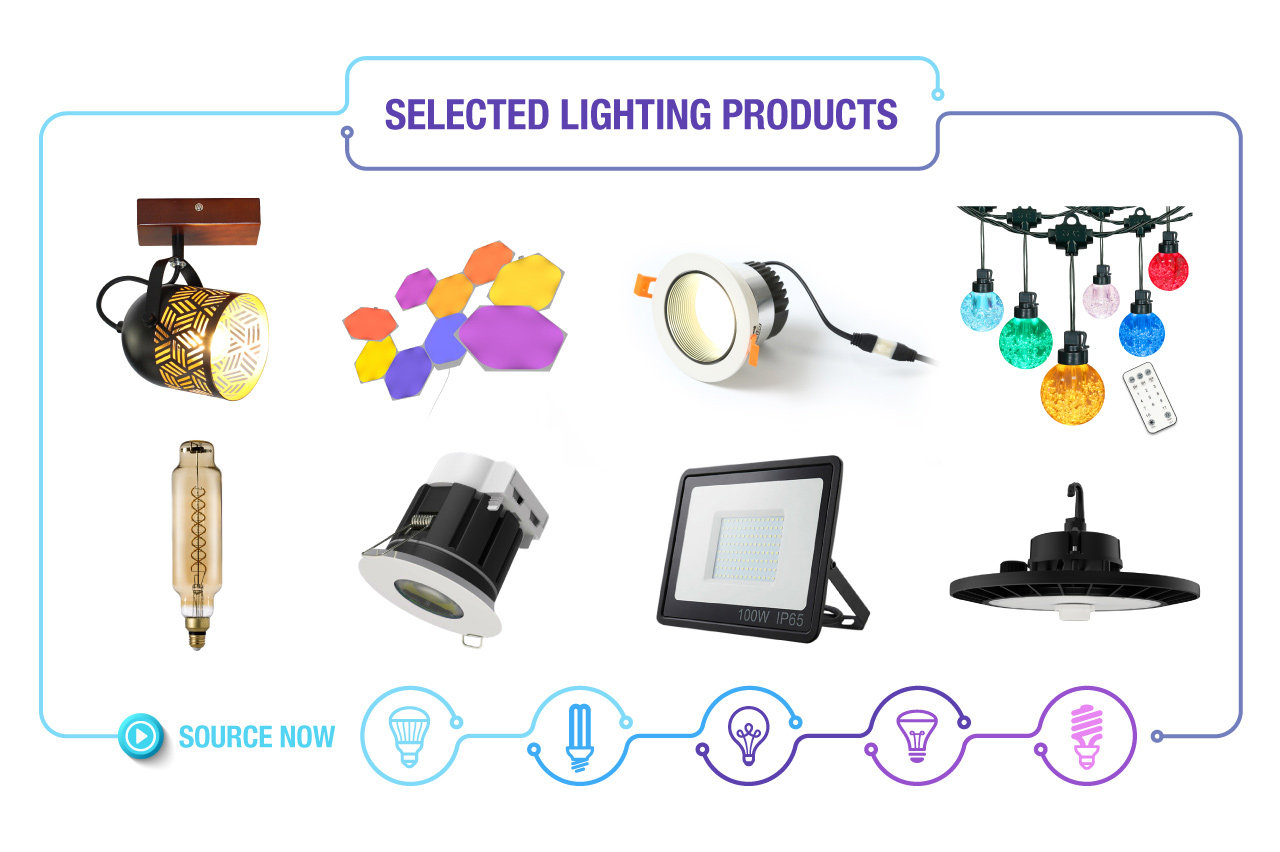Zhejiang Province – Lighting the World
Zhejiang Province is located in the south of the Yangtze River Delta, which is on the south-eastern coast of China. Zhejiang borders the East China Sea to the east, Fujian Province to the south, the provinces of Jiangxi and Anhui to the west, and Shanghai and Jiangsu Province to the north. The name “Zhejiang” comes from the Qiantang River – the largest river in the province – as it is also called “Zhijiang” or “Zhejiang” (meaning “twisty river” in English). The province is abbreviated to “Zhe”.A beautiful and historical province
Zhejiang is full of natural and cultural landscapes. Hangzhou, the provincial capital that hosted the 2016 G20 Summit, boasts a unique charm that integrates the past with the present. With Hangzhou’s West Lake at the centre, there are numerous scenic spots and tourist attractions all over the province, including 22 national scenic spots, four national tourist resorts, 10 national nature reserves, 30 national garden cities, 11 national wetland parks, 39 national forest parks and five national urban wetland parks.There are nine national historical and cultural cities in Zhejiang, namely Hangzhou, Ningbo, Shaoxing, Quzhou, Jinhua, Linhai, Jiaxing, Huzhou and Wenzhou. The province has 20 Chinese historical and cultural towns and 28 Chinese historical and cultural villages, the highest among all provinces in the country. Zhejiang also has the most intangible cultural heritages in all four lists of national intangible cultural heritages announced by the State Council of the People’s Republic of China. Currently, Zhejiang has a total of 217 national intangible cultural heritages on the lists. The West Lake in Hangzhou, the Zhejiang section of the Beijing–Hangzhou Grand Canal and the East Zhejiang Canal are world cultural heritages, while the Jianglang Mountain in Quzhou is a world natural heritage.

A thriving foreign economy
In 2022, Zhejiang’s value of import–export trade reached RMB4,680bn (a 13.1-per-cent increase over 2021; accounting for 11.1 per cent of the national total) , of which the value of exports was RMB3,430bn (a 14-per-cent increase over 2021; accounting for 14.3 per cent of the national total) and that of imports was RMB1,250bn (a 10.7-per-cent increase over 2021; accounting for 6.9 per cent of the national total). Zhejiang’s value of total import–export trade, export trade and import trade ranked third, third and sixth in the country respectively.The province has continued to optimise its geographical market layout, engaging in import–export trade with 235 countries and regions. Among which with the EU and the US grew 10.3 per cent and 5.4 per cent; with Middle East, Africa, ASEAN, and Latin America maintained a double-digit growth of 39.3 per cent, 21.2 per cent, 19.6 per cent and 14.4 per cent respectively, driving a 9.1 per cent increase in the province’s foreign trade on the whole; with countries and regions along the Belt and Road, and member countries of the Regional Comprehensive Economic Partnership (RCEP) grew 21.3 per cent and 12.5 per cent respectively, contributing 7.3 per cent and 3.1 per cent growth to the province’s foreign trade. In addition, the composition of export commodities has transformed and upgraded, with the exports of hi-tech products increased by 26.8 per cent, electrical and mechanical products by 11.1 per cent. The two categories accounted for 10.1 per cent and 44.7 per cent of the province’s total export value respectively, with the former figure records a breakthrough of more than 10 per cent for the very first time. Also, the export growth rate of hi-tech products outran that of the entire province by 12.8 per cent.
A beaming lighting industry
There are five characteristics of Zhejiang’s lighting industry:- Developing rapidly: Up until 20 years ago, Zhejiang’s lighting industry was contributing less than one per cent to the province’s GDP. However, according to recent years’ data, the lighting industry’s contribution to the production of Zhejiang’s light industrial products has reached 6.7 per cent – a solid proof that the industry has been growing by leaps and bounds.
- Production and value increasing steadily: The size of Zhejiang’s lighting industry is getting bigger and bigger, thanks to its continuous development and the establishment of new enterprises. Today, the industry has more than 1,000 enterprises and both its production and value have grown by dozens of times. The value of lighting enterprises above the designated size is more than RMB70bn, accounting for about 23 per cent of the industry’s total.
- Dare to innovate: Zhejiang’s lighting industry has come a long way from being a follower to a leader. There is a relatively large number of private enterprises in Zhejiang, which are good at recruiting talents, accessing the latest information from around the world and creating their own products.
- Export-oriented: Zhejiang’s lighting industry has always been mainly export-oriented. At the time when the industry was valued at RMB1.3bn, RMB900m of which were earned from exports. Currently, RMB70bn of the total value of the industry come from exports.
- A full spectrum of products: In the past, the province primarily produced residential lighting, followed by street lighting. Today, it offers products not just for residential use, but also for commercial environments, construction use, hospitals, classrooms, schools and more. It manufactures light sources for street lighting, landscape lighting and urban beautification, as well as for horticultural lighting, healthcare lighting, educational lighting, etc.

